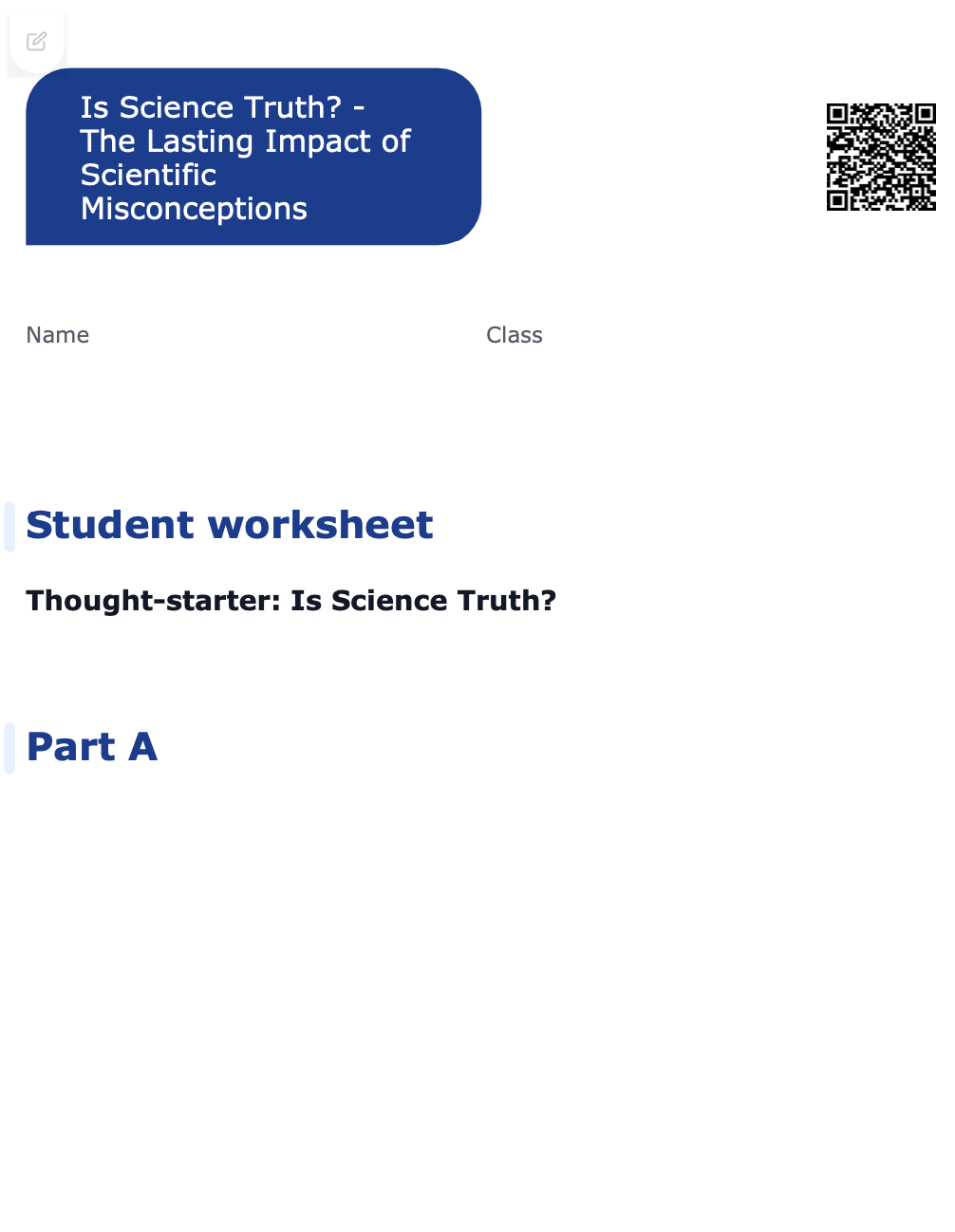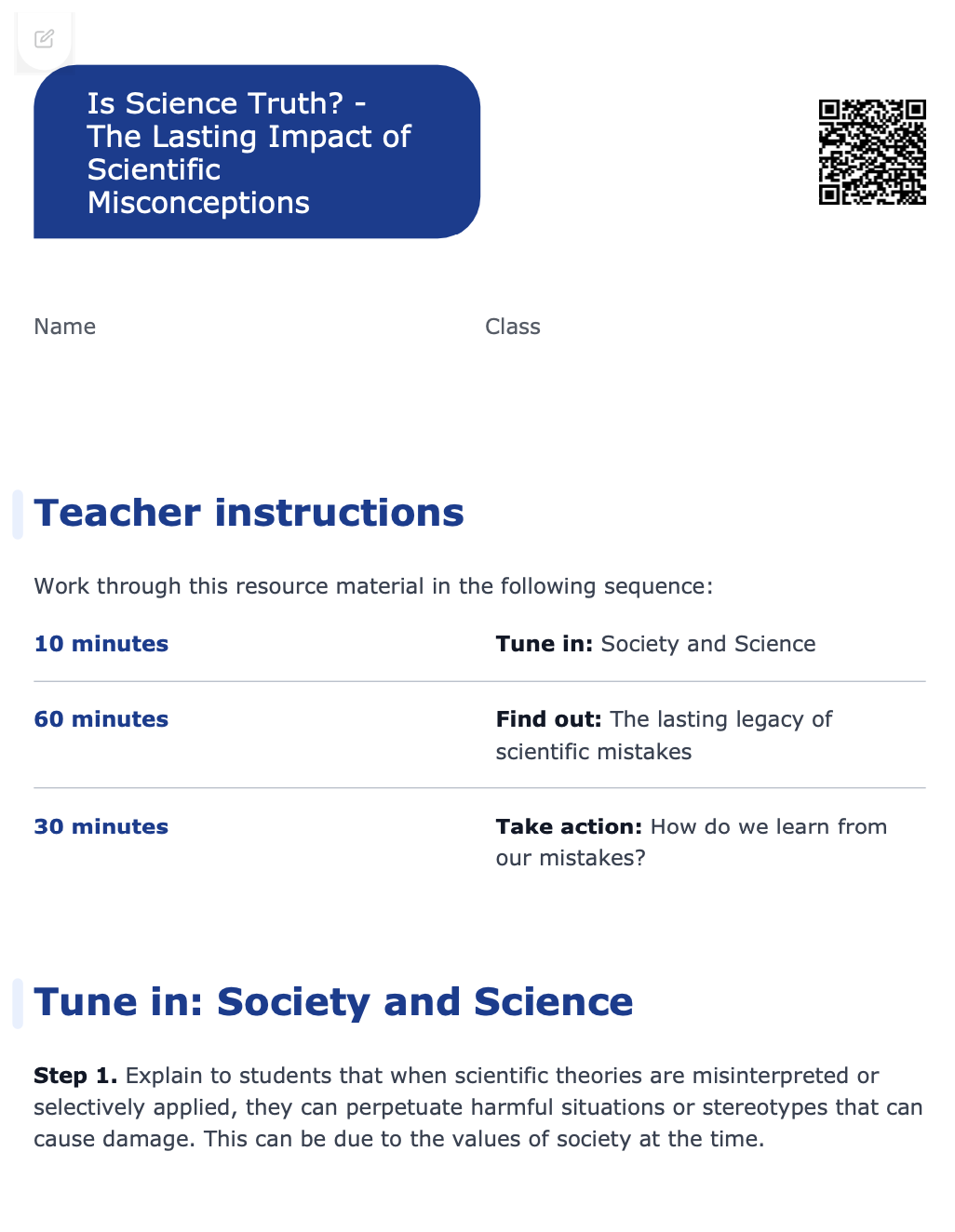Lesson summary
Students will begin exploring the involvement of the scientific community in shaping policies that impacted First Nations Australians in the 19th and early 20th centuries. Students are encouraged to examine how prevailing beliefs at the time, which emphasized the supposed moral and intellectual superiority of the “white race,” influenced scientific research that focused on categorizing human populations based on physical, mental, and moral characteristics. By investigating this historical context, students can gain insights into the deep-rooted biases and skewed perspectives that influenced scientific justifications for discriminatory policies.
Learning intentions:
Students will...
- investigate the role of science and the scientific community in the justification of policies affecting First Nations Australians during the 19th and early 20th century
- explore how the values and beliefs of a society may influence the direction of scientific research and how, in turn, scientific concepts may have an impact on the governance of that society.
Success criteria:
Students can...
- understand how society and science influence each other and the impacts this has on society
- understand the lasting implications of scientific misconceptions and policies that have affected and still affect First Nations Australians.
- critique the relationship between science and truth.
Lesson guides and printables
Curriculum links
Select your curriculum from the options below.
Lesson details
Curriculum mapping
Australian Curriculum (v9.0) content descriptions:
Science:
Students learn to:
- Examine how the values and needs of society influence the focus of scientific research (AC9S10H04)
Elaboration: Research how the values of the 19th and early 20th-century Australian society, combined with scientific misconceptions about heredity and evolution, influenced policies and attitudes towards First Nations Australians.
General capabilities: Ethical Understanding, Personal and Social capability
Syllabus outcomes: SC5-3VA
Cross-curriculum priority: Sustainability, Aboriginal and Torres Strait Islander Histories and Cultures.
Relevant parts of Year 10 achievement standards:
Students can analyse key factors that influence interactions between science and society
Skills
This lesson is designed to build students’ competencies in the following skills:
- communication
- social skills
- curiosity
- global citizenship
- ethical understanding
- empathy
- intercultural understanding
- reflection
- critical thinking
UN Sustainable Development Goals
Target 4.7: By 2030, ensure that all learners acquire the knowledge and skills needed to promote sustainable development, including, among others, through education for sustainable development and sustainable lifestyles, human rights, gender equality, promotion of a culture of peace and non-violence, global citizenship and appreciation of cultural diversity and of culture’s contribution to sustainable development"
Resources required
- Computer
- Projector
Additional info
Warning: Aboriginal and Torres Strait Islander peoples are advised that these lessons may contain images, voices and names of deceased persons.
Level of teacher scaffolding: High – Discussion of sensitive concepts and theories.
The ‘Is Science Truth?’ lesson sequence allows students to explore the involvement of the scientific community in shaping policies that impacted First Nations Australians in the 19th and early 20th centuries. It encourages students to examine how prevailing beliefs at the time, which emphasized the supposed moral and intellectual superiority of the “white race,” influenced scientific research that focused on categorizing human populations based on physical, mental, and moral characteristics. By investigating this historical context, students can gain insights into the deep-rooted biases and skewed perspectives that influenced scientific justifications for discriminatory policies.
This lesson is designed to be taught in conjunction with Lesson 1 - Is Science Truth? – When does Science Get it Wrong? Lesson 1 sets the stage for a deeper understanding of the relationship of science to truth in order to tackle some heavier and more nuanced, complex content in this lesson – Is Science Truth? The Lasting Impact of Scientific Misconceptions
This lesson invites students to think critically about the relationship between scientific discovery and societal values and how the marriage of these things can sometimes lead to negative impacts. Mainly the negative impacts that scientific misconceptions about heredity and evolution at the time of colonisation had on Australia’s First Nations peoples.
This is an original Cool+ lesson.
Related professional learning
How to Teach Critical Thinking – Secondary
Quick summary: This course will help you to view the world with a more critical eye by introspectively exploring your own biases of thinking.




Welcome back!
Don't have an account yet?
Log in with:
Create your free Cool.org account.
Many of our resources are free, with an option to upgrade to Cool+ for premium content.
Already have an account?
Sign up with:
By signing up you accept Cool.org's Terms and Conditions(Opens in new tab) and Privacy Policy(Opens in new tab).